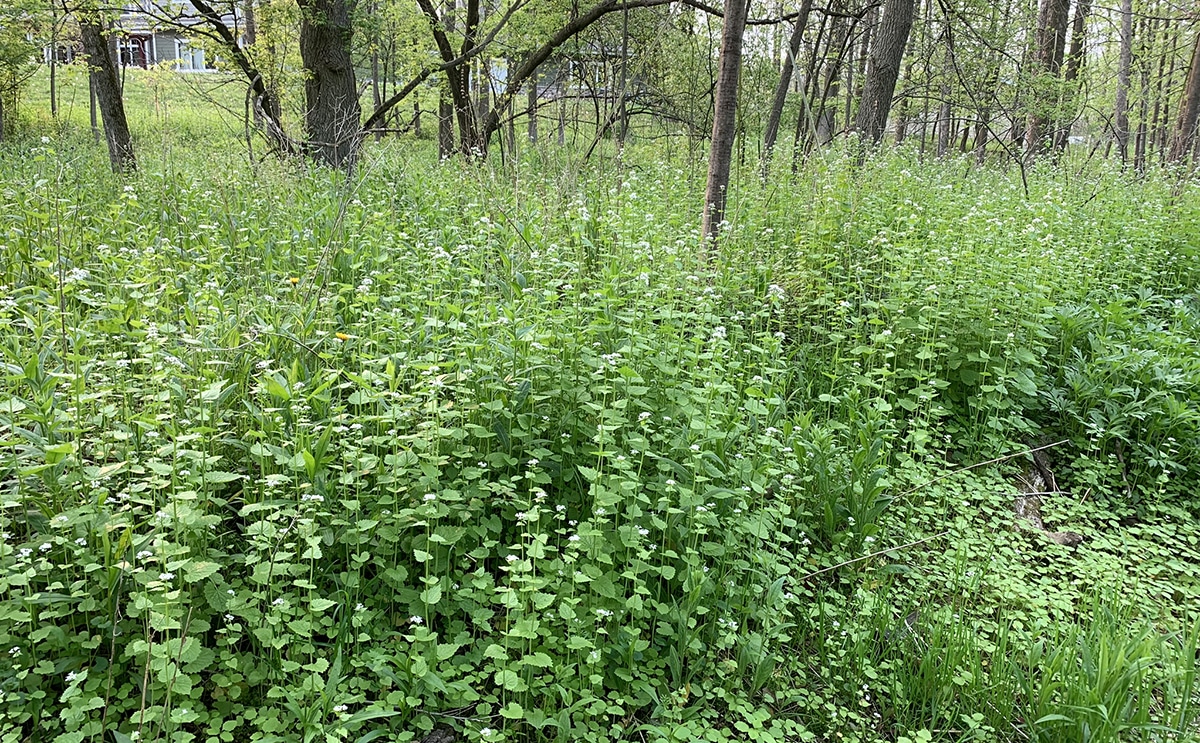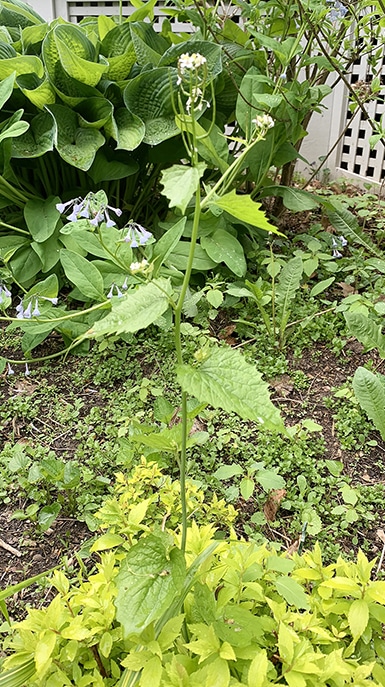At this time five years ago I would have been about 10 big contractor garbage bags in to my annual garlic mustard weed pull. The property, actually the neighborhood, was full of it. I would pull the stuff until my hand cramped up and no more garbage bags would fit in the car to be taken to the dump. And then the next weekend I’d pull some more.
If you had asked me then if there was any point to all that work, I’m sure there were times I would have told you that there probably wasn’t.
This year I’ll probably pull a total of one small garbage bag full of garlic mustard weed. I may not have won the war, but I’m claiming victory in the battle.

You’re probably familiar with garlic mustard weed (Alliaria petiolata) because it’s a common invasive plant in many areas. In Europe it is grown as a salad crop (yes, it’s edible), and it is not nearly so ill behaved. But in the U.S. it is a thug, in particular because it emits chemicals in the soil that suppress the growth of other plants. It’s also toxic to some butterfly species.
In gardening groups I often see people say “It’s only a weed if you don’t like it” and advise that people not pay attention to garlic mustard weed because it’s edible. I have a pretty lax view on how people should view the plants that grow on their property—to each their own—but I draw the line on terribly invasive species that cause great damage well beyond the property line.
A biennial, garlic mustard weed is a wicked self seeder. Over the years I’ve become adept at recognizing it in all its forms, and undoubtedly this is part of the reason I finally have a handle on it in my yard.

But, unless some insect comes along that causes trouble for it, I don’t believe there will ever be a time that garlic mustard weed does not exist in my yard. On large properties and places like the state park just an eighth of a mile from my house, no matter how much people try, it’s nearly impossible to pull it all. And once it flowers, those seeds go everywhere.
But I’m OK with where I’m at with this challenging weed. All that pulling and dragging enormous garbage bags around the yard was all worth it. It’s great to see progress.


7 Responses
I’ve got a little garlic mustard from new neighbors on two sides. Really hard to tell them what they’ve got and what they should (I hope) do. I am spending tons of time pulling all the invasives I got rid of but which had seeded in neighbors around me: Virginia waterleaf, Dame’s rocket (Hesperis matronalis is still being sold lots of places) and the monstrous creeping bellflower (Campanula rapunculoides). I am really impressed at your results and definitely worth the effort. Do you think Helen’s newspaper system would work for bellflower? The real problem for me is that it is all around me. So it will keep invading my garden.
Linda, I wouldn’t call Virginia waterleaf invasive. I transplanted some when I moved from my great grandfather’s property where it occurred naturally and haven’t any problems.
Weeds can be a problem but there is a solution that I have tried and it really works. Place newspaper down in the area were you plan to place your plants and cover with mulch or pine straw. You will not see anymore weeds and your plants will grow and bloom with no problems saving you more time to enjoy your garden.
I’m thankful we don’t have that here in Texas (yet) but we’ve got our share of nasties. Unfortunately most people here aren’t nearly as rallied against invasive plants are other regions of the US are.
I can very much relate to this. I spent a whole weekend in early spring pulling it from my home in Catskills. Don’t toss it all though… If you catch it early enough then the tender leaves and shoots make a great pesto — just add some olive oil, pine nuts, and parmesan!
I would faint if I saw that much garlic mustard just across the road from my house. How awful. I give you a big hip hip hooray for working so diligently to eradicate this thug. I hope to never see it in my garden.